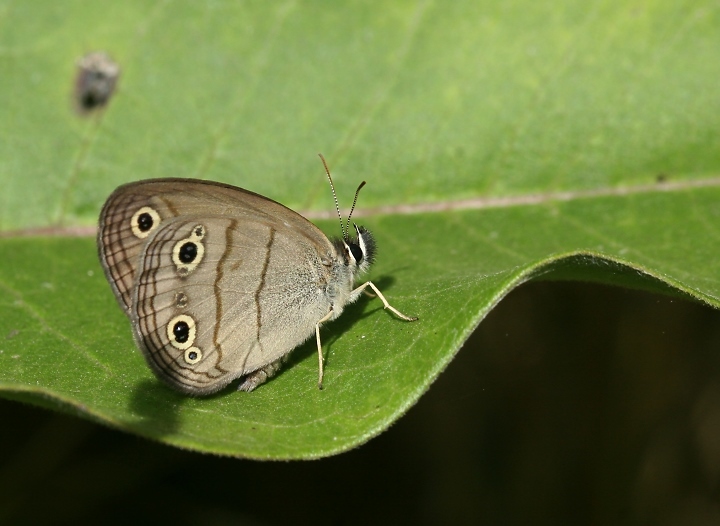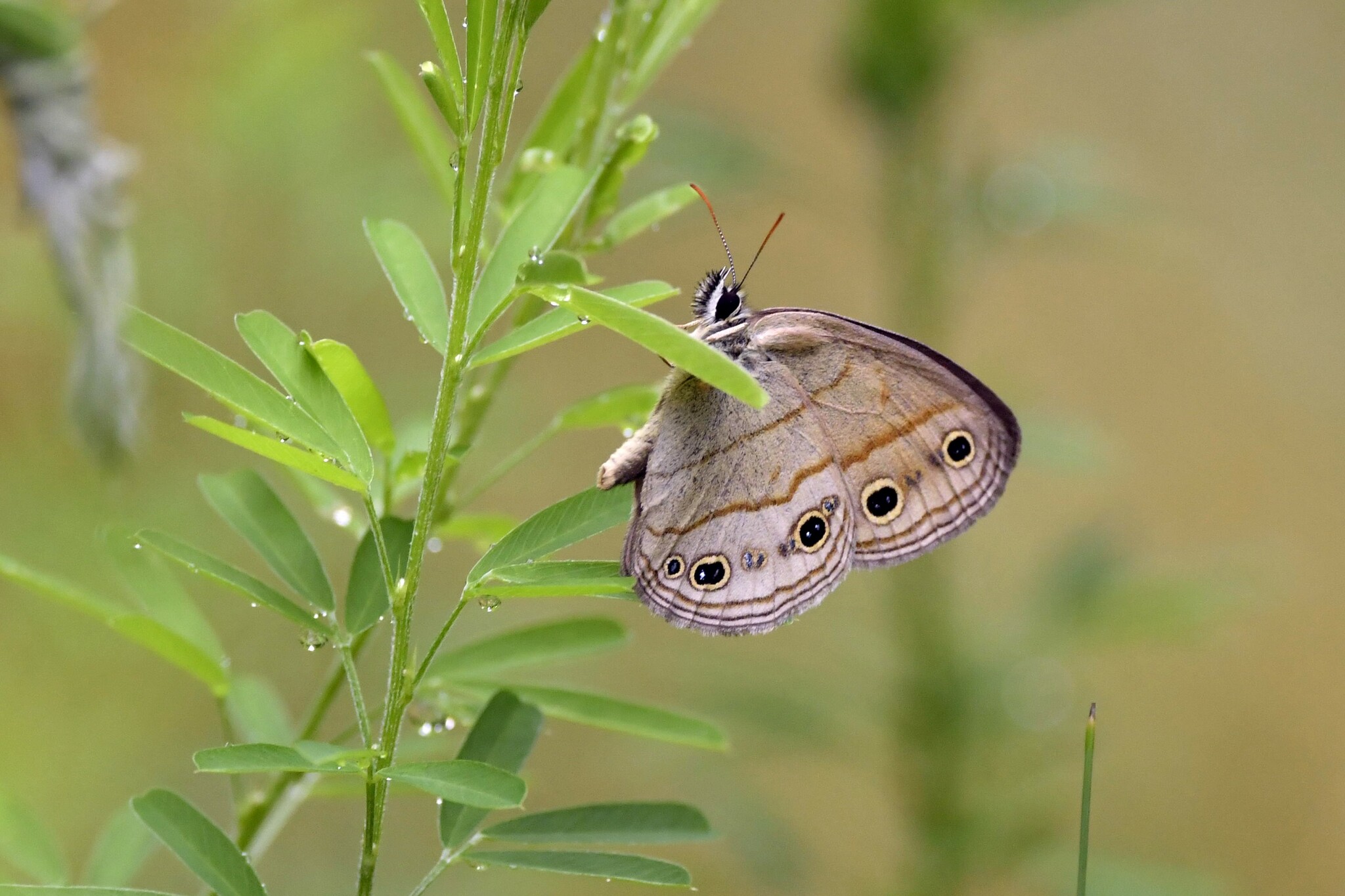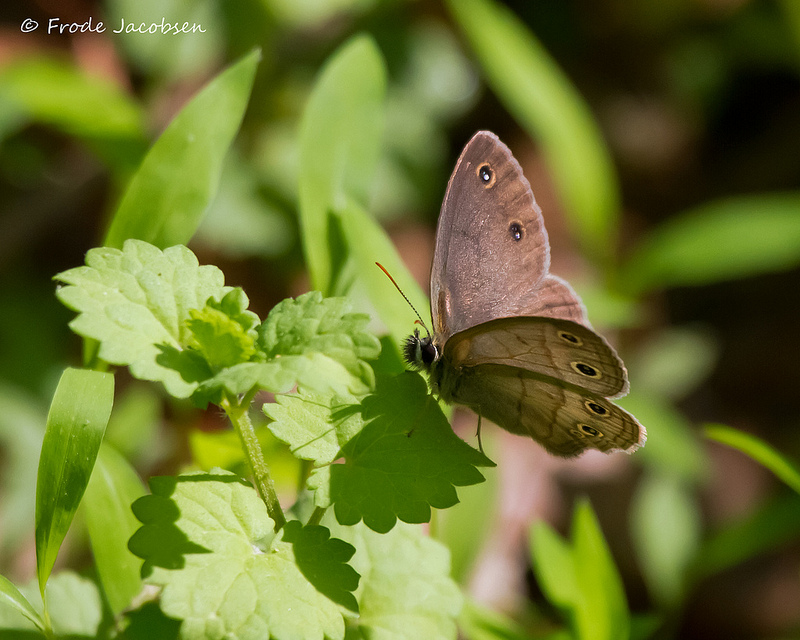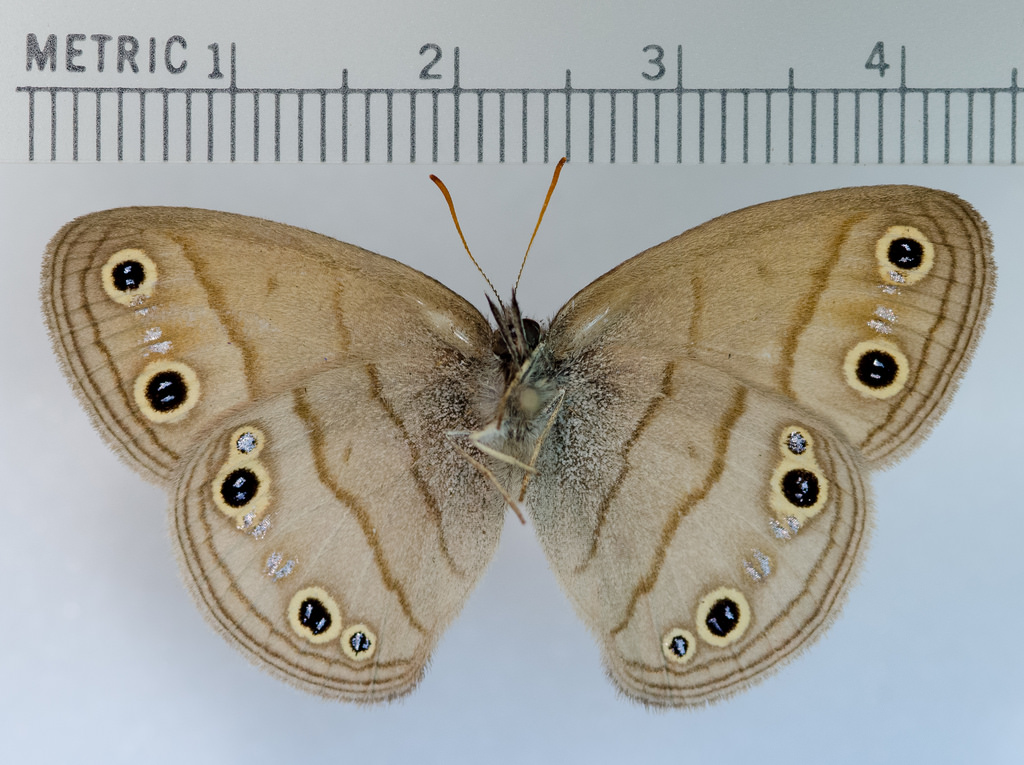Seasonality Snapshot
Map Snapshot

























601 Records
Status
The delicate and active Little Wood Satyr (Megisto cymela) is a common butterfly of wooded areas, open areas within forest, and edge habitats. This butterfly has a preference for shady places, and it is often found flitting about even on cloudy days, when many sun-loving species are not flying. Little Wood Satyrs, like related butterflies, prefer rotting fruit, sap, and scat to flowers (Brock & Kaufman, 2003).
Relationships
Uses various grass species. In West Virginia, will use Poa species. In New York, uses orchard grass (Dactylis glomerata).
Media by Bob Cammarata. View Record Details
Media by Mark Johnson. View Record Details
Media by Bill Hubick. View Record Details
Media by Frode Jacobsen. View Record Details
Media by Thomas Wilson. View Record Details
Media by Kevin Heffernan. View Record Details
Media by Mark Johnson. View Record Details
Media by Emilio Concari. View Record Details
Media by Robert Ferraro. View Record Details
Media by rwcrook via iNaturalist. View Record Details
Media by Jim Brighton. View Record Details
Media by Frode Jacobsen. View Record Details
Media by Jared Satchell. View Record Details
Media by Timothy Reichard. View Record Details
Media by Jim via iNaturalist. View Record Details
Media by Jonathan Irons. View Record Details
Media by Rick Cheicante. View Record Details
Media by Frode Jacobsen. View Record Details
Media by Mike Hudson. View Record Details
Media by Emily Stanley. View Record Details
Media by Mark Etheridge. View Record Details
Media by Mark Etheridge. View Record Details
Media by Kyle Klotz. View Record Details
Media by Kyle Klotz. View Record Details
Media by rwcrook via iNaturalist. View Record Details
Media by Kurt Schwarz. View Record Details
Source: Wikipedia
This article needs additional citations for verification. (July 2023) |
| Megisto cymela | |
|---|---|

| |
| Dorsal view | |
| Scientific classification | |
| Domain: | Eukaryota |
| Kingdom: | Animalia |
| Phylum: | Arthropoda |
| Class: | Insecta |
| Order: | Lepidoptera |
| Family: | Nymphalidae |
| Genus: | Megisto |
| Species: | M. cymela
|
| Binomial name | |
| Megisto cymela (Cramer, 1777)
| |
| Subspecies | |
| |
| Synonyms | |
| |
Megisto cymela, the little wood satyr, is a butterfly species of the Satyrinae family that occurs in North America.
Description
[edit]
- Adult
The wingspan is 29–48 mm. The forewing has two yellow-rimmed black eyespots on both sides, dorsal and ventral. The hindwing has two spots on the dorsal side but have smaller spots on the ventral. The other all color is light brown. The wood satyr is comparably larger than sosybia.[citation needed]
- Caterpillar
The body is light greenish brown with a dark dorsal line and alternating brown and yellowish lateral stripes. The surface of the caterpillar has bumps, these bumps bear short reddish-brown hairs. The head is dirty white while the tail hairs are light gray.[citation needed]
The wood satyr is part of the typically Neotropical subtribe Euptychiina. It can be observed in forests, usually along the edges and in brush-filled openings along cleared forest roads. It has also been observed in grassy areas usually between forested patches. It flies near the ground, twisting between and through grasses, small trees and bushes. Collectors have found it often difficult to capture, though it appears to be a slow flyer at first glance. This butterfly prefers habitat that is open, contains deciduous trees along with marshy areas and possessing brushy cover.[2]
Range and habitat
[edit]They are seen in the eastern United States and southeastern Canada, from Nova Scotia south into Florida, west to Texas, Saskatchewan and Wyoming. As the name implies the little wood satyr is most commonly seen in woods and shrubby areas.[3]
Life cycle
[edit]Adults in the northern portions of their range fly between June and July while their southern populations fly between March and September. Adults have a slow "bouncing" flight but they will rise as far as the top of tall trees. Females lay eggs singly on grass, the fourth-instar caterpillars hibernate.
Larval foods
[edit]Adult foods
[edit]References
[edit]- ^ "NatureServe Explorer 2.0 Megisto cymela Little Wood Satyr". explorer.natureserve.org. Retrieved 29 September 2020.
- ^ Klotz, Alexander B. (1951). a Field Guide to the Butterflies of North America, East of the Great Plains. Peterson Field Guide Series (first ed.). Boston: Houghton Mifflin Company. p. 69. ISBN 0395078652.
- ^ Klotz, Alexander B. (1951). a Field Guide to the Butterflies of North America, East of the Great Plains. Peterson Field Guide Series (first ed.). Boston: Houghton Mifflin Company. p. 64. ISBN 0395078652.
Bibliography
[edit]- "Species Megisto cymela - Little Wood Satyr - BugGuide.net". Retrieved 2008-11-20.
- "Megisto Hübner, [1819]" at Markku Savela's Lepidoptera and Some Other Life Forms
- "Species Detail Butterflies and Moths of North America". Archived from the original on 2009-07-16. Retrieved 2008-11-20.
External links
[edit]- Little Wood-Satyr, Butterflies of Canada





























